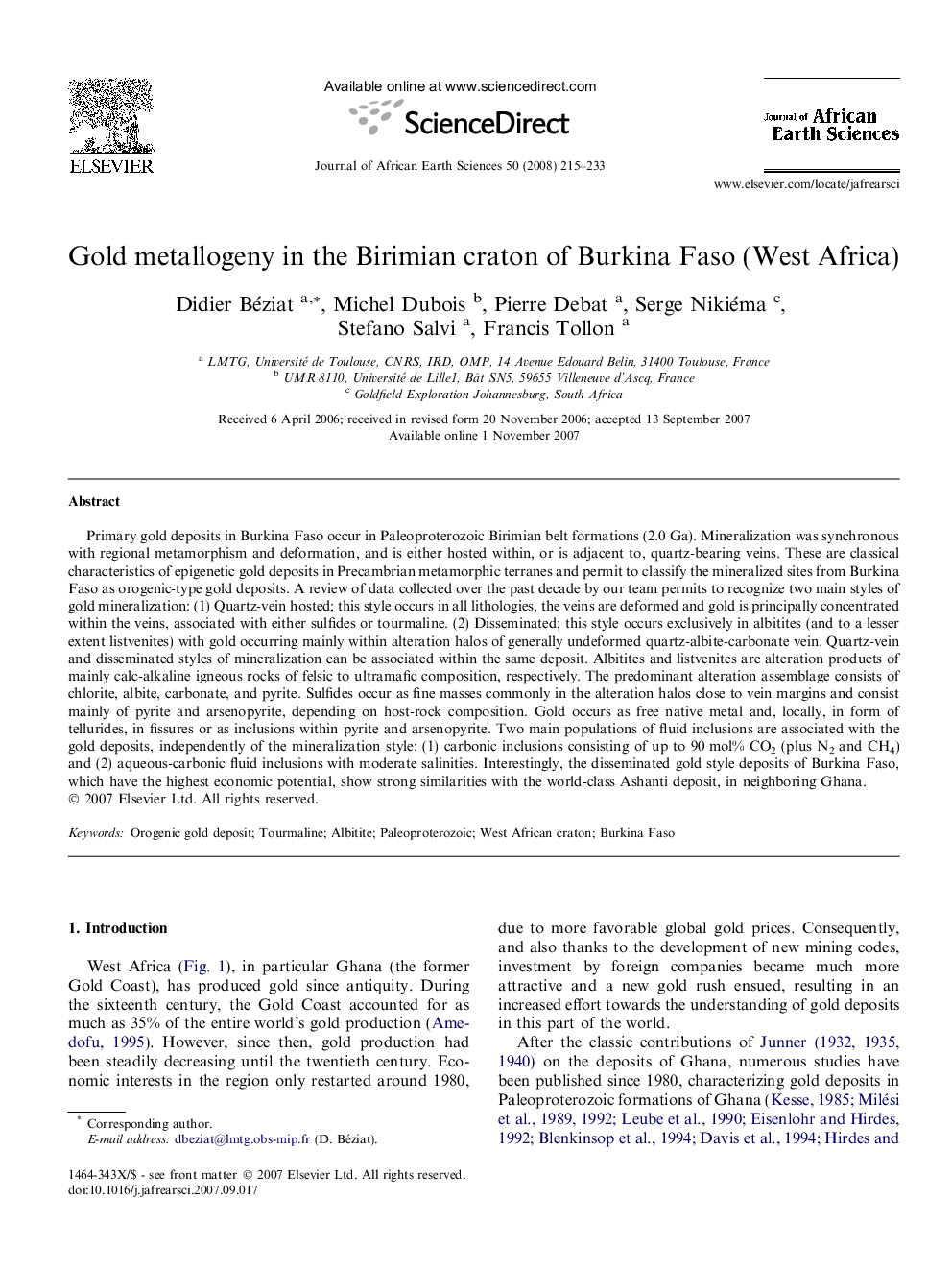| Article ID | Journal | Published Year | Pages | File Type |
|---|---|---|---|---|
| 4729657 | Journal of African Earth Sciences | 2008 | 19 Pages |
Primary gold deposits in Burkina Faso occur in Paleoproterozoic Birimian belt formations (2.0 Ga). Mineralization was synchronous with regional metamorphism and deformation, and is either hosted within, or is adjacent to, quartz-bearing veins. These are classical characteristics of epigenetic gold deposits in Precambrian metamorphic terranes and permit to classify the mineralized sites from Burkina Faso as orogenic-type gold deposits. A review of data collected over the past decade by our team permits to recognize two main styles of gold mineralization: (1) Quartz-vein hosted; this style occurs in all lithologies, the veins are deformed and gold is principally concentrated within the veins, associated with either sulfides or tourmaline. (2) Disseminated; this style occurs exclusively in albitites (and to a lesser extent listvenites) with gold occurring mainly within alteration halos of generally undeformed quartz-albite-carbonate vein. Quartz-vein and disseminated styles of mineralization can be associated within the same deposit. Albitites and listvenites are alteration products of mainly calc-alkaline igneous rocks of felsic to ultramafic composition, respectively. The predominant alteration assemblage consists of chlorite, albite, carbonate, and pyrite. Sulfides occur as fine masses commonly in the alteration halos close to vein margins and consist mainly of pyrite and arsenopyrite, depending on host-rock composition. Gold occurs as free native metal and, locally, in form of tellurides, in fissures or as inclusions within pyrite and arsenopyrite. Two main populations of fluid inclusions are associated with the gold deposits, independently of the mineralization style: (1) carbonic inclusions consisting of up to 90 mol% CO2 (plus N2 and CH4) and (2) aqueous-carbonic fluid inclusions with moderate salinities. Interestingly, the disseminated gold style deposits of Burkina Faso, which have the highest economic potential, show strong similarities with the world-class Ashanti deposit, in neighboring Ghana.
